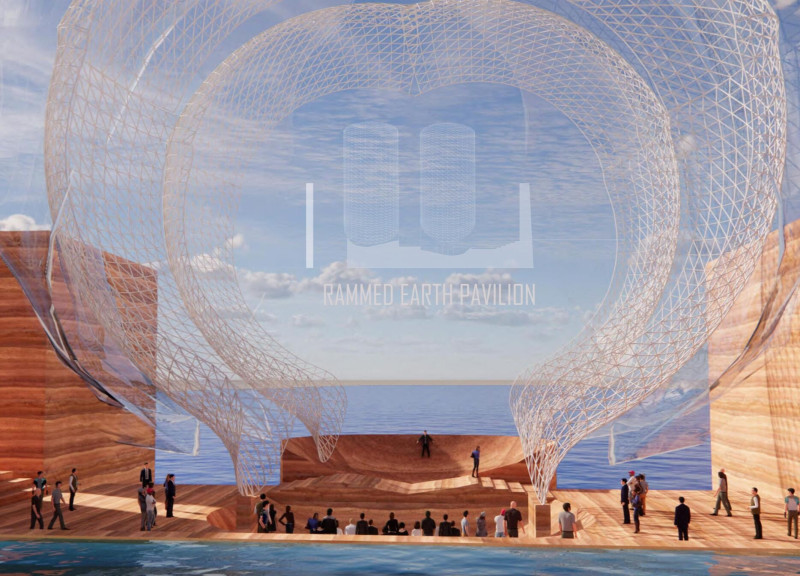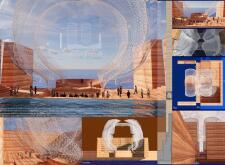5 key facts about this project
The rammed earth pavilion stands at a gulf surrounded by the ocean, designed as a space for lectures and performances. It connects visitors to nature in a setting that highlights sustainability. The concept revolves around using local materials and forms that reflect the environment, creating a harmonious relationship between the structure and its surroundings.
Foundation and Materials
The foundation consists of Cast In Place (CIP) concrete and gabion sea walls, providing strength against the coastal conditions. These materials help fight erosion and offer a balance between durability and visual appeal. The pavilion’s walls are made using rammed earth techniques, incorporating local sand, gravel, and clay. This approach fosters a sense of place, as the same earth also serves as the ground surface, reinforcing the project's connection to its location.
Spatial Arrangement
Inside, the pavilion features a concaved stage that serves as the main area for performances. Audiences gather in an earth-carved chamber shaped like a bowl. This design aids in sound performance and offers comfortable seating. The curved ground creates an inviting atmosphere, encouraging interaction among visitors while allowing them to focus on the events taking place.
Sheltering Structure
Hemp tarps cover the pavilion, offering protection from the weather while letting natural light in. This choice enhances the visual aspects of the structure and adds warmth to the interior. The use of sustainable materials like hemp emphasizes a commitment to environmentally friendly practices, reflecting the overall design philosophy centered on nature and sustainability.
Cultural Resonance
The design draws on themes of nature and survival, resonating with human experiences. Its placement within a natural setting brings to mind stories like that of Noah, encouraging visitors to reflect on their connection to the environment. The mix of organic shapes and local materials creates a rich experience, inviting everyone to appreciate the relationship between architecture and the world around them.
The pavilion fosters a sense of place by allowing visitors to experience both openness and intimacy, inviting them to engage with the setting while remaining grounded in the earth beneath them.



















































